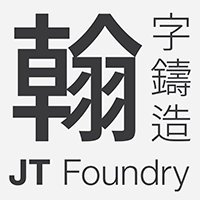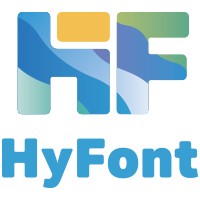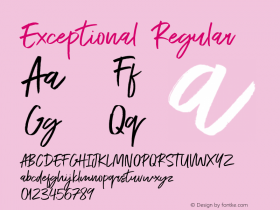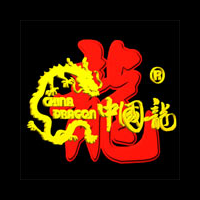One Hel(vetica) of a Story
It is hard not to simply gush about Paul Shaw's Helvetica and the New York City Subway System: The True (Maybe) Story.
For a life-student and consumer of design history and culture publications, it ticks so many boxes that to 'merely' enjoy it is really quite easy. While there has been much said about Helvetica+ since its publication in 2011, readers might wonder why a review, so late in the day is worthwhile. Like all good design books, each time one returns to it new things seem to come to the fore. But more important than this, I believe there have been some important omissions in the discussions and reviews since the publication of the MIT Press edition.
Front sleeve of dust jacket. Based on the color coding discs diagram in the 1970 New York City Transit Authority Graphics Standards manual.
Firstly, some notes on its design. The format size of Helvetica+ – 285mm (w) x 245mm (h) – immediately suggests that this is primarily a book to study, and not necessarily read in transit. Both the text content (including substantial notes and captions) and that of the photography, illustration and type specimens deserve so much more than a mere flick through. The format size is ample and allows a decent reproduction size for the documentary-style photographs as well as the illustrations. The majority of the photography is in black and white, as befits the time, but skilfully included color reproductions, of artwork from other projects and clients gives the story added context.
The use of color reproductions of other projects by Unimark International helps to break up the grey. But more importantly it is also a useful technique that gives further context to the central narrative.
This choice of format also allows for an effective typographic arrangement between the central narrative text, numerous (and learned) notes, captions and images. Furthermore the generous use of white space is a welcome contrast to the monochromatic content of the photographs. The design of Helvetica+ is overall of a good standard. But for this reader a small but significant typographic detail lets the design down. The choice of AG (Akzidenz Grotesk) Old Face for long-reading text is an odd one in any circumstance. In this instance it is no less so. AG Old Face tells its own peculiar and idiosyncratic story. Made up from a number of sans serifs of varying weights and widths each drawn by different designers, it was brought together decades later – in haste if not indifference. The result of which included a differing weight ratio between capital and lower case letters – more by (un)happy accident than design. It was not intended for, and doesn't lend itself to setting for long-reading text. While of course setting Helvetica+ in AG Old Face makes some 'historical' and contextual sense – in that Standard (Akzidenz Grotesk) Medium features strongly throughout this story – nevertheless, I believe it is no less problematic.
Good example of the effectiveness of the layout.
I wouldn't wish to hold Shaw (the designer) and Goldstein to the idea of 'invisible typography'. I would nevertheless suggest that the annoying 'polka-dot' or 'peppering' effect caused by its optical and technical deficiencies, when set as long-reading text is simply not worth the historic reference being made to the reader.
The setting of the text ragged-right offers some compensation for the peculiarities of AG Old Face and its overly wide (default) word spacing. That said, one would hope that this doesn't override the impact of the other purposeful design decisions made by Shaw and Goldstein.
While of course the contribution of design in adding to and aiding (transforming) a scholarly work is crucial, but it is to the writing we will now turn. Helvetica+ is a fine contribution to graphic design history and so deserves attention within the design community and more broadly.
Frontispiece. Showing a corrected, closely cropped page that includes Helvetica Medium type specimens and necessarily prescriptive typed and handwritten notes by Unimark.
Shaw's latest piece of typo/graphic design history has rightly received exceptional citation from some significant design writers and practitioners in the US and Europe. The back sleeve of the dust jacket includes some high praise indeed from the likes of Michael Bierut who tells us that it is, '…one of the best pieces of design history I have ever read'. Erik Spiekermann is no less enthusiastic saying, 'For transit and type nerds alike, Paul Shaw's book is the Bible', with Tom Geismar adding that it is, '…an amazing piece of research.' They are all names readers of I Love Typography will surely be familiar and people who know what they are talking about. Interestingly there is a glowing short review alongside by Kenneth T Jackson who offers Helvetica+ as, '…a unique perspective…'. Jackson's is a name that will likely be less familiar to the same readers. He is both Editor-in-chief of the Encyclopaedia of New York City and President Emeritus of the New York Historical Society. From the point of view of the necessary maturation of graphic design history, it is a well placed and important inclusion. Shaw has written a book that just might do what all design writers must aspire to – reach an audience beyond the 'confines' of the design community (practitioners, educators and writers). He has, by this important inclusion shown his commitment to doing just that.
Of course Shaw's readership for Helvetica+ will largely come from 'design-land'. In part this is because the subject is of the design community, but it also speaks to designers who are hungry for insight, knowledge and direction. But, if graphic design is to be recognized and engaged with as a significant cultural player, then a broader readership is crucial. It is on this question, above all others, that Helvetica+, and all that has come before and will after, must ultimately be judged.
Periodically, the question 'what kind of design history' comes into sharp focus in the form of thought-provoking contributions to design conferences, talks and published writing. It is a crucial question and one that needs and deserves continual assessment.
In general terms, an expansive graphic design history is desirable and necessary. But it will be developed alongside reference books, visual case studies, personal profiles, technical writing, criticism, design journalism and theory. Fundamentally, whichever form it takes should, 'do justice to the complex processes of interrelations and interaction between them', as historian and historical theorist E H Carr would have it. People need to be placed center stage and their relationships, choices and goals understood in historically-specific contexts.
Cover and inside pages of the New York City Transit Authority Graphics Standards Manual, designed by Unimark International. In its own right this is a best practice approach to mass signage design.
Shaw's intervention is a conscientious and critically minded reading of design history, beneath which the true (maybe) significance of events are unearthed. Shaw treats the reader as one capable of understanding that the business of design – even at this level – is not a simplistic or utopian process, where each design decision follows an even better one. In this regard Helvetica+ is an important contribution. In terms of approach, Shaw gives an account of some decisive moments in design history and has refused to gloss over the cracks. For many designers, part of their day-to-day creative struggles revolve around resolving multiple and competing interests, untangling webs of confused business decisions, colossal egos and seemingly immovable organizational and financial forces – well before attending to matters of a visual kind. Giving a qualified, accurate and critically unambiguous account of the role of design and designers is the least we should expect from design history; unfortunately this is not always the case.
But Helvetica+ seems to do just that by placing questions of a typographic and aesthetic nature in a commercial context, where often chaotic forces emerge from multiple directions and sources. The decisive design decisions – which at first might appear mere personal preference – are shown to be based on a contemporaneous and concurrent industry best practice and an exacting attitude towards typographic standards.
Left: Rail Alphabet by Jock Kinneir and Margaret Calvert for British Rail. Right: Schiphol alphabet by Benno Wissing for Schiphol Airport. The inclusion of other mass transportation sign projects offers an international perspective.
This contention is drawn out further through introducing key signage design schemes that preceded, and undoubtedly influenced, the NYC project. Shaw's account further illuminates the role and impact of the wider design community in transforming practice. Internationally, mass transportation sign systems were being designed for some significant high profile clients: Heathrow Airport (UK) by Colin Forbes, British Railway by Jock Kinnear and Margaret Calvert, Milano Metro (Italy) by Bob Noorda and Schiphol Airport by Benno Wissing.
Throughout this period designers were communicating and critiquing each other through type. Even if unwittingly, they were nevertheless contributing to the consolidation of typographic orthodoxies through the medium of mass-signage design. As Helvetica+ points out, type designers certainly had their own unique take on Akzidenz Grotesk or Helvetica. They altered the length of ascenders/descenders, replaced angled terminals with horizontals, increased the x-height and modified the weights of whole families.
At the same time, practitioners and design writers shared important moments of coactivity. Shaw notes the significance of two seminal books on signage, Nicolete Gray's Lettering on Buildings (1960) and Mildred Constantine and Egbert Jacobson's Sign Language for Buildings and Landscape (1961). These along with a dynamic design press meant more attention and legitimacy was being paid to this new and increasingly influential field of graphic design. Articles and follow-up comment pieces appeared in the mainstream press, illustrating the cultural influence and impact of design on society more broadly. It was an exciting moment that stressed the mutually beneficial and dynamic relationship between design criticism and practice.
Two Enamel girder signs. Left: emphasis placed on the station street number, all closely set in Standard Medium; Right: no emphasis. Set (default) in Neue Helvetica Medium. A perfect illustration of a typeface being only as good as the designer in whose hands it is placed.
Throughout the 60s, 70s, & 80s (indeed to date) in all major mass transportation sign systems the 'grotesque', sans exception, was the undisputed heavy-weight champion of the design world. It was less a question of which typeface and more one of in who's hand it was fashioned – a typographic truism that is often overlooked.
All the above considered it makes the inclusion of a seven line paragraph on page 102 quite perplexing. Shaw writes, 'Why did the MTA abandon Standard? At the time Helvetica's popularity was on the wane as its widespread use since the early 1970s had induced boredom and backlash. Postmodernism had effectively exposed the subjective nature of the Modernist notion of neutral, rational and universal design and, in doing so, had undercut the principle reasons that many designers had given for choosing Helvetica over all other faces' (p. 102).
Standard versus Helvetica? Specimen sheets of both families. Left: Standard. Right: Helvetica. These pages illustrate the differences between the letters Q, R, S, e, f, g, h and numerals 1, 2, 3.
In the first instance this is out of step with the rest of the book in terms of its literary and investigative tone. Like a sign in the NYC Subway System set in Roger Excoffon's Mistral, these words simply don't belong. Intellectually it is wholly inadequate. While contesting and challenging events from a particular interest or point of view is no bad thing – indeed we could do with more contestation around key issues and events – but in this instance the claims made by the author deserve and demand more than a mere seven lines of text and a few references. This crucial question, of understanding the dynamics of the shift from Modernism (and its near 100 year history) to Post-Modernism (and its comparatively short history) has hardly been dealt with by the social sciences never mind the design writers cited. To consign a significant cultural movement to the dustbin of history in such a way is at best wishful thinking but at worst overly simplistic and counterproductive.
But as disappointing as this is I would urge that instead we concentrate on all that is good about this book.
At his most engaging, Shaw's writing takes the form of classic investigative journalism – it is as if we are being let into important secrets (which indeed we are). The dogged and committed research that Helvetica+ demanded must have had the author wondering if it was all worth it. Of course it was! Its publication has made design writing a little richer. It has also raised the bar and thus set an example. It is a complex story that has been obscured by self-interest, myth and the passing of time. Shaw has done an exceptional job in unraveling and revealing the real dynamics of the process and the professionalism of the designers at the center of this story.
-
 ShanhaiFonts
ShanhaiFonts
Brand:山海字库
Area:China

-
 Cangji Fonts
Cangji Fonts
Brand: 仓迹字库
Area: China

-
 JT Foundry
JT Foundry
Brand: 翰字铸造
Area: Taiwan, China

-
 Handmadefont
Handmadefont
Brand:
Area: Estonia

-
·千图字体
-
 HyFont Studio
HyFont Studio
Brand: 新美字库
Area: China

- ·Sinnesreize / Embracing Sensation by Silvia Gertsch and Xerxes Ach
- ·Barbe à papa Cotton Candy
- ·The Future of Sex poster
- ·How House Industries Designs Its Retrotastic Logos and Typefaces
- ·He Invented a Font to Help People With Dyslexia Read
- ·"David Bowie is turning us all into voyeurs" button
- ·Food Not Bombs hypothetical redesign
- ·Brother Moto Flat-Trackin' Tee
- ·"Die Alpen – Vielfalt in Europa" stamp
- ·Antropofagia. Palimpsesto Selvagem

























